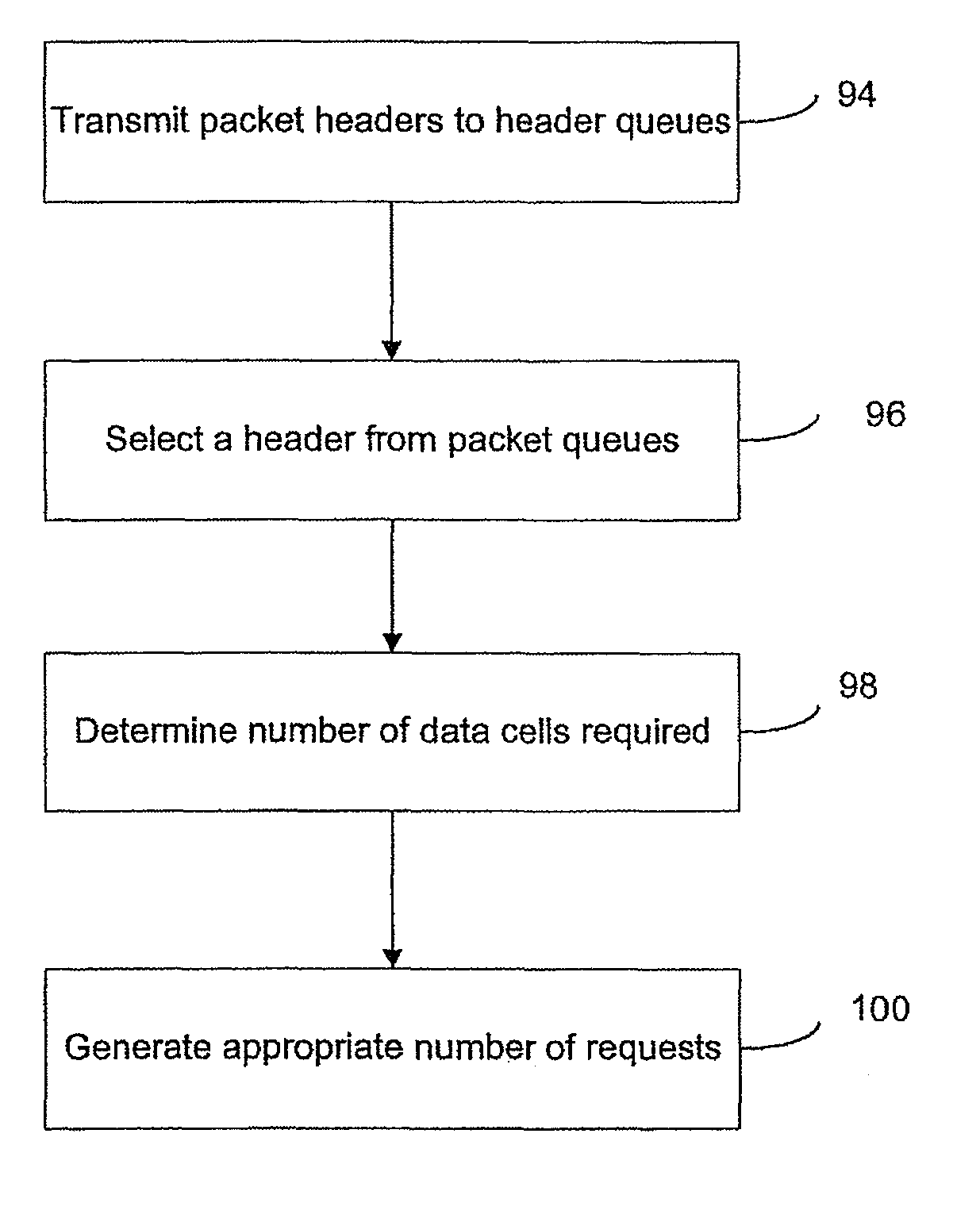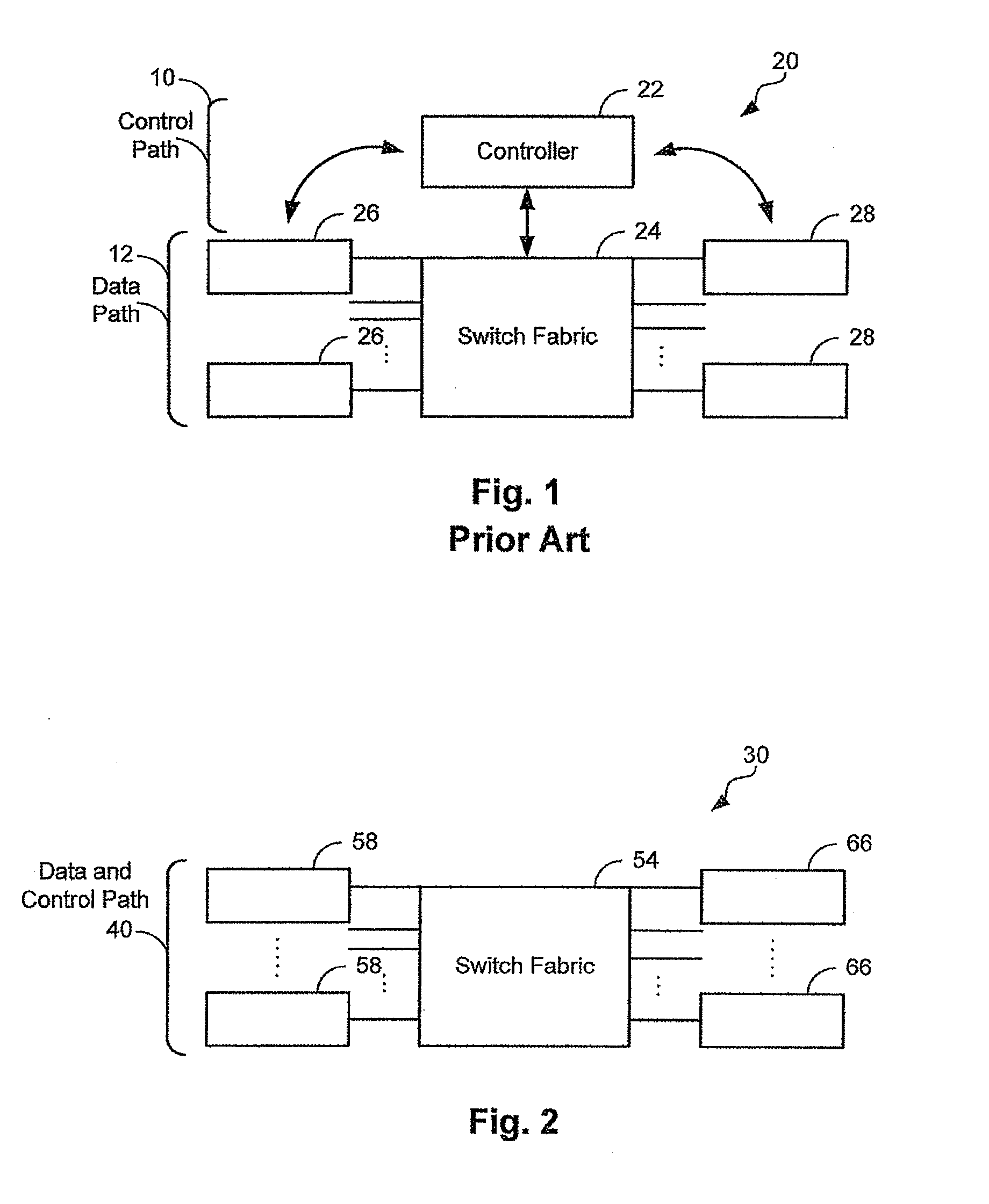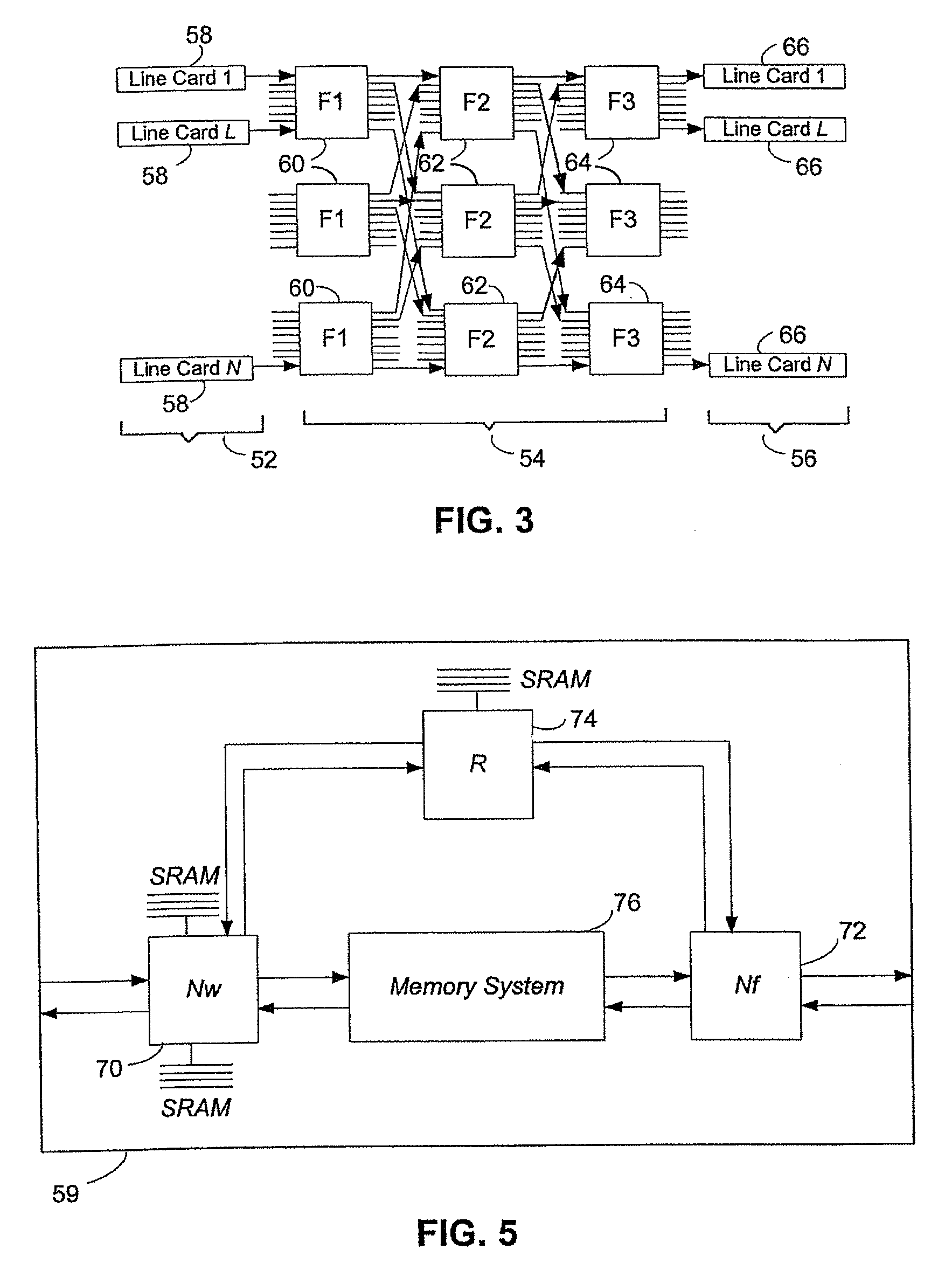Switching device
a switching device and packet switching technology, applied in data switching networks, frequency-division multiplexes, instruments, etc., can solve the problems of large aggregate bandwitdth, rapid unimplementability with increasing the number of line cards, instantaneous congestion of output line cards, etc., to achieve easy fault detection and recovery features, less storage, and minimal reordering of cells
- Summary
- Abstract
- Description
- Claims
- Application Information
AI Technical Summary
Benefits of technology
Problems solved by technology
Method used
Image
Examples
Embodiment Construction
[0058]The present invention provides an efficient switching device and methodology for routing packets through a network. A number of terms are used herein to describe network transmissions and related structures and processes.
[0059]“Data cell” or “cell” refer to a smallest block of data that is passed through a switching device. The data cell includes a header portion and a data portion. Each packet received on an input port is divided in to one or more fixed length cells. “Cell data” refers to data contained within a data portion of a cell. “Data transfer unit” refers to a cell that includes request and grant information along with cell data.
[0060]Referring to FIG. 2, a switching device 30 includes a data path 40. Data path 40 includes a switch fabric 54, source line cards 58 and destination line cards 66. The data path provides paths for transferring packets from source line cards 58 to destination line cards 66. Unlike a conventional router, the present invention does not requir...
PUM
 Login to View More
Login to View More Abstract
Description
Claims
Application Information
 Login to View More
Login to View More - R&D
- Intellectual Property
- Life Sciences
- Materials
- Tech Scout
- Unparalleled Data Quality
- Higher Quality Content
- 60% Fewer Hallucinations
Browse by: Latest US Patents, China's latest patents, Technical Efficacy Thesaurus, Application Domain, Technology Topic, Popular Technical Reports.
© 2025 PatSnap. All rights reserved.Legal|Privacy policy|Modern Slavery Act Transparency Statement|Sitemap|About US| Contact US: help@patsnap.com



